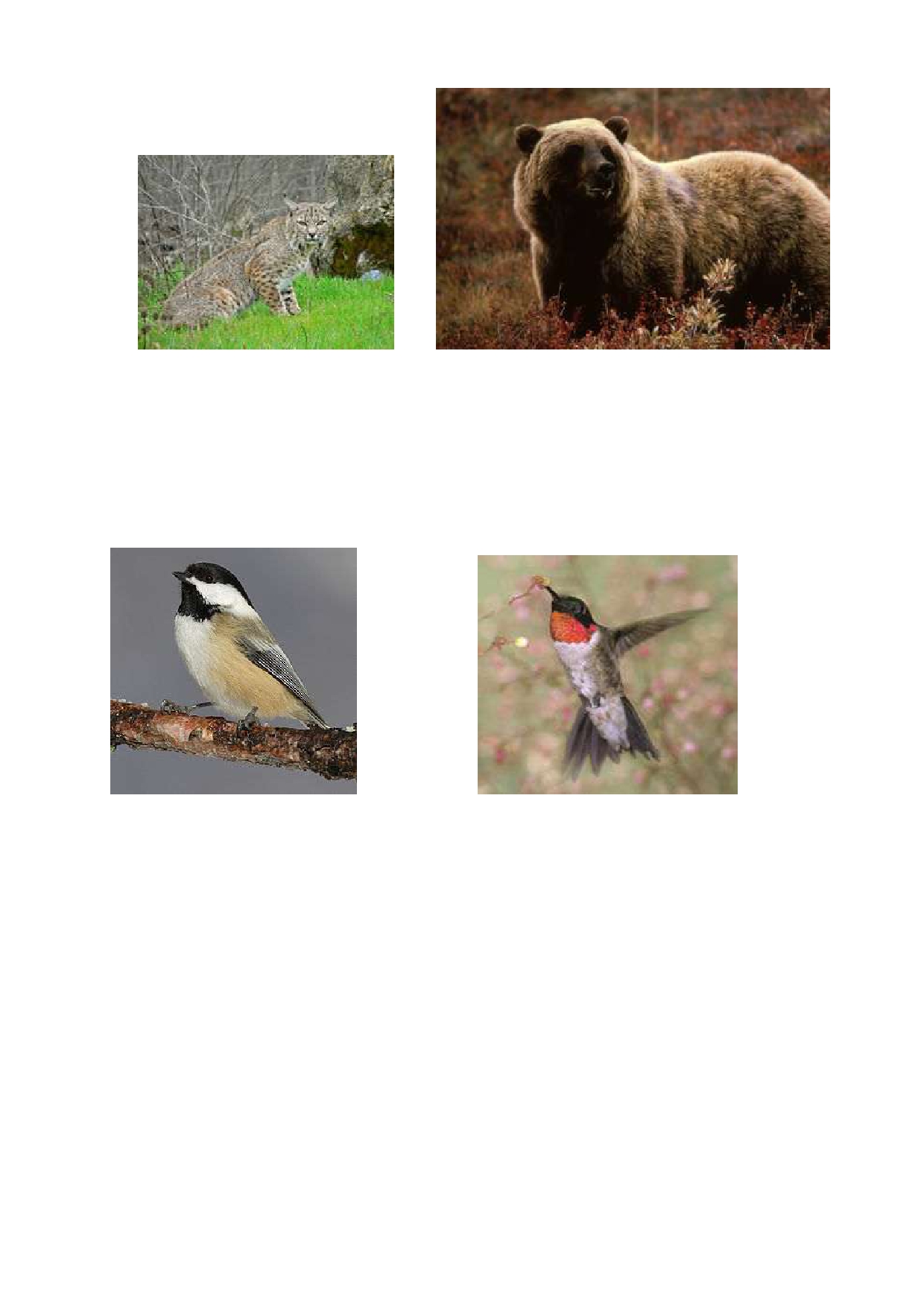
- •1. The Official Name of the Country
- •2. The National Symbols
- •3. The Status and Government
- •4. The Provinces and Territories
- •5. The Geography and Location
- •6. The Environment
- •7. The Population
- •8. The Languages: English and French
- •9. The Religions
- •10. The History
- •11. The Currency and Economy
- •12. The Largest Cities of Canada
- •13. The Culture and Science in Canada
- •14. The Mass Media in Canada
- •15. The Sports in Canada
6. The Environment
The fauna of Canada includes mammals (млекопитающие), reptiles, amphibians,
fish, birds and insects. Canada is known for its mammals such as the American bison, the arctic hare, the badger, the beaver, the black bear, the bobcat, the coyote, the grizzly bear, the red fox and many others.
7
 A
bobcat A
grizzly bear
A
bobcat A
grizzly bear
The Canadian birds are the American robin (дрозд), the black-capped chickadee (синица-черноголовка), the ruby-throated hummingbird (колибри), and the whooping crane (журавль).
A black-capped chickadee A ruby-throated hummingbird
In Canada, there are approximately 17,000 species of trees, flowers, herbs and other
flora.
There are many forests, woods and national parks in Canada. The largest national
park in the world - Wood Buffalo - is also in Canada.
7. The Population
Canada is a multinational country. There are about 34 ethnic groups. 83% of the total
population are white.
8
The largest ethnic groups are Canadians of British origin (44%) and Canadians of
French origin (28%). 25% are the other Canadian Europeans (of Scottish, Irish, German, Italian, etc. origin). The Aboriginal peoples, the Indians and Eskimos, are called the First Nations (3%).
40% of the population identify themselves as Canadians.
8. The Languages: English and French
Canada's two official languages are English and French. They have an equal status in
the federal courts, the Parliament and in all the federal institutions. The public has the right to receive the federal government services in either English or French. The official language minorities are guaranteed their own schools in all the provinces and territories.
English and French are the mother tongues of 60% and 23% of the population
respectively. They are the languages most spoken in the country. 98.5% of the Canadians speak English or French: 67.5% speak English only, 13% speak French only, and 18% speak both.
The English-versus-French struggle between French-speaking Quebec and the other
nine provinces, where English is the majority language, remains high. The Charter of the French Language in Quebec makes French the official language in this province. Although 85% of the French-speaking Canadians live in Quebec, there are a lot of people, who speak French in Ontario, Alberta and some other provinces. Ontario has the largest French-speaking population outside Quebec. French is used as a language
of instruction, in courts and for other government services in addition to English.
There are about 50 universities in Canada. The Laval University in Quebec and
Montreal University are French-language ones, i.e. their students are taught in French only.
The movement for Quebec's independence is still a political issue, and the
differences between French Quebec and English Canada do not just apply to the languages only. The French influence of Quebec can be seen in architecture, music,
9
food and religion. With little in common culturally, it is not difficult to realize that
the relations between French Quebec and English Canada are quite tense. Quebec feels its differences, but these sentiments are neither understood nor appreciated by the rest of the country. It is for these reasons that many Quebeckers favour the formation of a sovereignty association relationship with the other provinces of the country.
Several aboriginal languages have an official status in Northwest Territories. Inuktitut
is the majority language in Nunavut, and one of the three official languages in this territory.
Some non-official languages are important in Canada, too. They are Chinese, Italian,
German and others.
